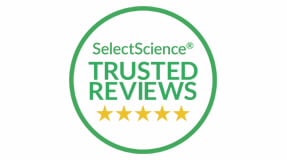
xCELLigence RTCA eSight Instrument including Workstation
xCELLigence RTCA eSight - Imaging & Impedance
Online data acquisition and offline data analysis are easy to perform using RTCA eSight Software, which also supports FDA 21 CFR Part 11 compliance.
- RTCA Analyzers
Request a Quote
Product Details
- Combine label-free impedance-based xCELLigence Real-Time Cell Analysis technology with live-cell imaging in red, green, and blue spanning 5, 10, and 20x objectives for increased confidence in your cell analysis and conclusion
- Whole well imaging expansion: Visualize the entire well when doing QC or quantifying and monitoring cell growth
- Multiplexed and information-rich assays combining cellular impedance and imaging in the same well, all inside a culture incubator
- Deliver physiologically relevant data whether 2D or 3D based cell cultures, with a simple workflow that adapts to differing experimental protocols while monitoring cell health, behavior, and function
- Utilize flexible live-cell imaging brightfield capabilities and three fluorescent channels spanning a multitude of microplate forms (6-, 12-, 24-, 48-, 96-, or 384- well) and vessel types (35- or 60-mm dishes), and the capability of user-defined schedules
- Analyze a continuous readout of cell number, proliferation, cell size/shape, changes to morphology, and cell-substrate attachment quality
- Expanded imaging throughput with support for five 96-well regular microplates (all five cradles), 3D organoid capability, and built-in 21 CFR Part 11 compliance for secure, auditable data management.
Single Setup for Dual Measurements
Live cell imaging and real-time biosensor measurements can be performed on the same cell populations, which provides insightful information on cell behavior. The streamlined workflow, high reproducibility, and quantitative kinetics of the eSight system makes it ideal for a wide range of cell-based assays such as proliferation, cytotoxicity, and apoptosis.
Learn MorePatented Real Time Cell Analysis
The impedance-based xCELLigence technology utilizes proprietary microplates (E-Plates) embedded with gold biosensors at the bottom of each well, which serve to non-invasively quantify cell behavior. Over the course of an experiment, the biosensors monitor cell metrics such as proliferation, adhesion strength, changes in morphology, migration, differentiation, and much more.
Learn MoreExpanded eSight Capabilities and Live-Cell Imaging Applications
Generate highly reproducible data and derive more meaningful biological insights- all inside your incubator. Investigate a wide range of cell models on the eSight. Now introducing Dilution Cloning, Scratch Wound Healing, Immunotherapy, Cell-by-Cell Analysis, 3D Spheroid Invasion and Immune Cell Killing applications.
Learn More- Key Literature
-
Download Literature
Download a product brochure or data sheet
- Brochures
- English
- 23 Nov 2021
- 72.95 KB
- Application Notes
- Article Reprints
- Flyers
- Posters
- Specifications
- Technical Overviews
Customer Reviews for xCELLigence RTCA eSight - Imaging & Impedance
Explore customer reviews of this product or write your own review
Agilent Cell Analysis Publication Database
Search scientific publications by research area, cell type and more.
Agilent Cell Analysis Webinars
Featured webinars help you stay informed about timely cell analysis research topics.
Videos
In Vivo DNA-launched Bispecific T Cell Engager Targeting IL-13Ra2 Controls Tumor Growth in an Animal Model of Glioblastoma Multiforme
Immuno-oncology research is changing the landscape of cancer treatment by harnessing the immune system to attack cancer cells. These immunotherapies utilize both the adaptive and innate arms of the immune system, playing a pivotal role in a host’s defense against tumors. Join the Agilent Immuno-Oncology webinar series and learn how experts in the field are making groundbreaking discoveries and taking steps towards a cancer-free world. Glioblastoma is an aggressive tumor with poor survival rates. Bispecific T cell engagers (BTEs) against different cancers are in various stages of clinical development. Toxicity resulting from cytokine release syndrome and the short half-life of BTEs, which necessitates continuous infusion—complicating delivery and increasing costs—are major challenges in the field. Here we describe the development of in vivo DNA-launched BTEs (dBTEs) with highly focused targeting of interleukin-13 receptor a2 (IL-13Ra2), a glioblastoma cell-surface target. We developed 4 BTEs targeting 2 epitopes of IL-13Ra2 and studied how heavy-light chain orientation affects BTE function. The dBTEs induced T cell activation, cytokine production, and tumor cytolysis in the presence of IL-13Ra2+ tumor cells, but we observed unique patterns of immune activation. We found a strong correlation between granzyme B secretion and dBTE-induced cytolysis of specific and nonspecific tumors. We down-selected dBTE PB01-forward based on lower cytokine induction profile and highest activation specificity. In vivo, dBTE PB01-forward demonstrated an improved half-life versus intravenous recombinant BTE delivery. In an orthotopic glioblastoma model, dBTE PB01-forward controlled tumor growth, improving animal survival, supporting the hypothesis that the blood-brain barrier does not affect the function of systemically delivered dBTE. Further study of PB01-forward for targeting glioblastoma and other IL-13Ra2+ cancers is warranted.
Armor CAR T Cells with Enhanced Potency for Cancer Immunotherapy
Explore rapid generation of non-activated CAR T cells with enhanced potency for cancer immunotherapy in this on-demand webinar from Agilent.
In process assessment of critical process parameters impacting CAR T cell potency, metabolic fitness and phenotype
Explore how Agilent's cell analysis tools enhance CAR-T cell manufacturing by providing real-time insights into immune phenotype and metabolic fitness.
Dr. Zelia Geouveia
Institut Curie
We are a laboratory working in cancer research, namely chimeric antigen receptor (CAR)-T cells targeting different antigens in the tumor. We were seeking a high throughput platform that would allow us to evaluate CAR-T cells killing in real-time. We were also interested in visualizing the killing in real time. The xCELLigence RTCA eSight was one of the technologies that could provide such information using impedance and live cell imaging (one machine, two different and precious information). When compared with other instruments that could provide imaging information only, the image quality was similar but we would not have the impedance for comparison. Thus, we decided that having both
View MoreAgilent xCELLigence RTCA Instrumentation Supports Potency Assay Development in Recent FDA Approval
Agilent xCELLigence Real-Time Cell Analysis (RTCA) technology supports the testing of accuracy and reliability in AUCATZYL, a recently approved CAR T therapy by Autolus Therapeutics. The xCELLigence RTCA technology supported the development and implementation of the potency assay. By providing precise and reliable cell analysis capabilities, Agilent supported Autolus's efforts in establishing robust analytical methods.
- 15 Jul 2025
- FAQs
-
Real-time Cell Analysis – FAQs
Discover answers to common questions about real-time cell analysis and xCELLigence technology
- Instruction Sheets
- Site Preparation Checklists
- User Manuals


